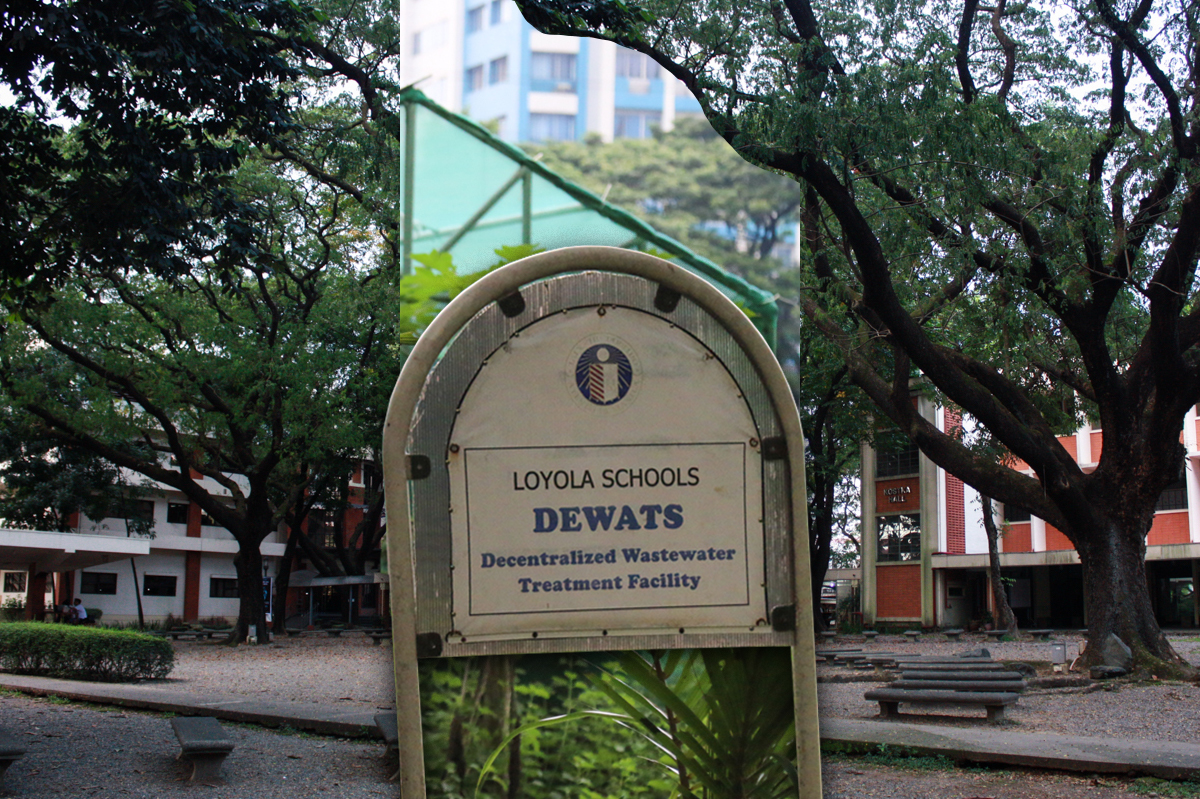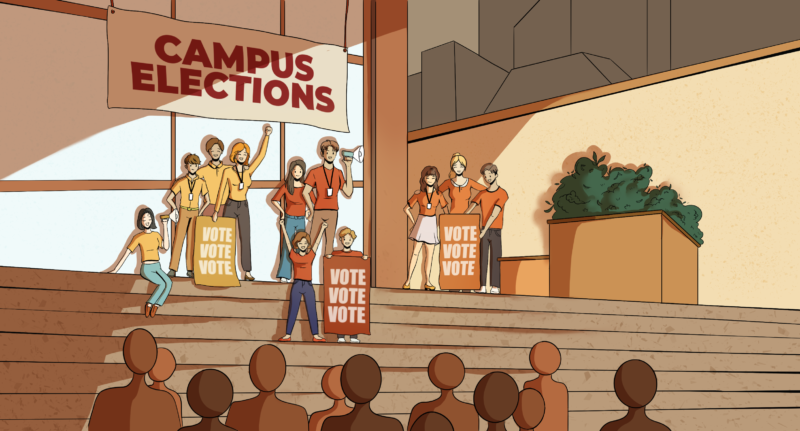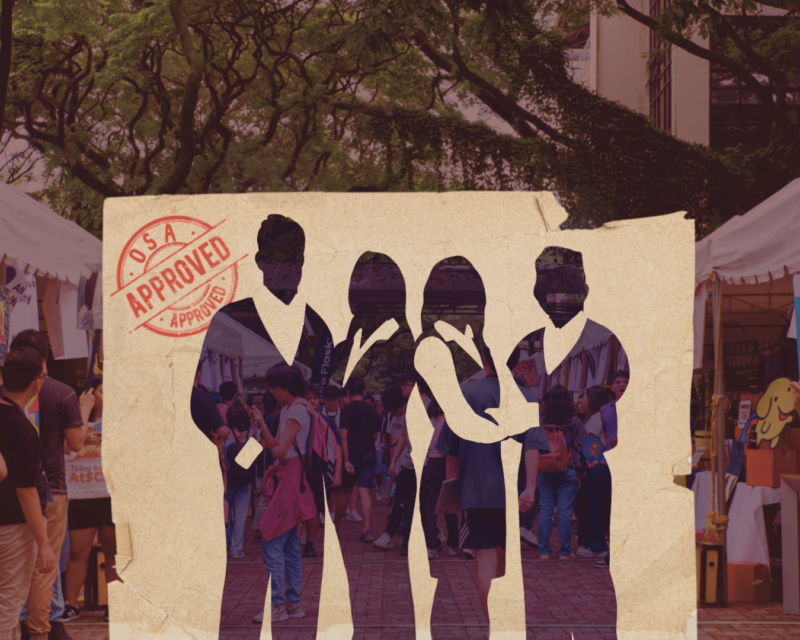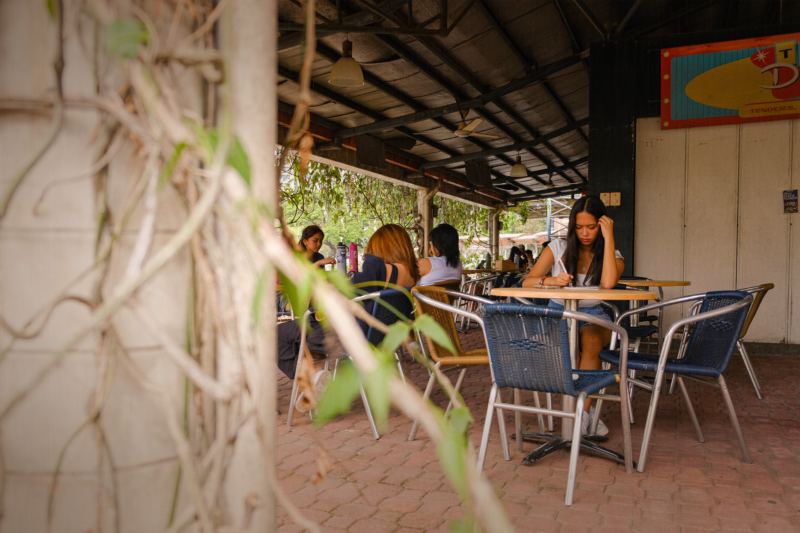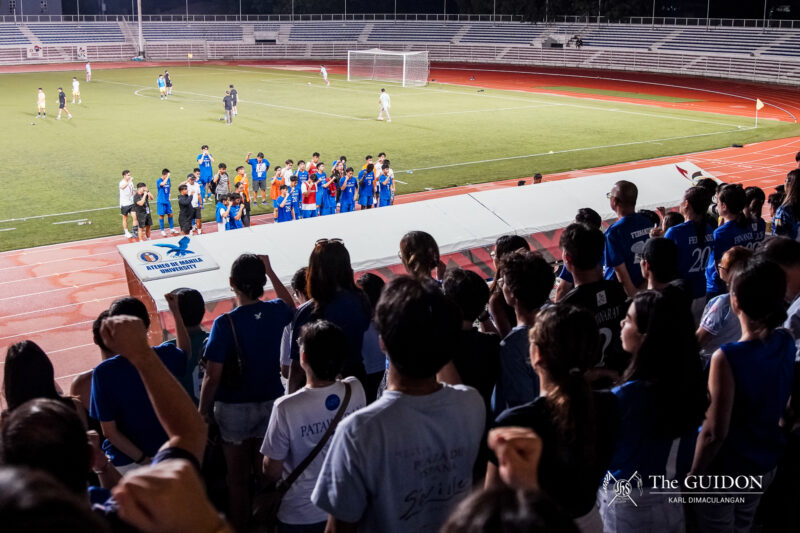GUIDED BY the principle of environmental stewardship, the Ateneo has committed itself to investing in green technologies in the pursuit of championing campus sustainability: A practice that promotes and integrates environmentally-friendly development in the institution’s culture.
From cutting down on greenhouse gas emissions to reducing energy consumption, sustainability principles have guided many of the Loyola Schools’ (LS) policies and guidelines. Ateneans have also made these their rallying cries, participating in global climate strikes to advocate for more proactive efforts in addressing climate-related structural issues and injustices.
Now, as the existential threats of climate change make themselves increasingly known and irrevocably corrode human life, systematic and innovative changes to promote campus sustainability become all the more crucial.
Unearthing the roots
The Ateneo campus is home to abundant green spaces—the ideal habitat for urban wildlife such as migratory birds and exotic trees to thrive. Throughout the years, the University has implemented a battery of notable projects and initiatives to preserve this ecosystem.
Most notably, the University released the Sustainability Policies and Guidelines on Green Spaces, Biodiversity, and Mobility in 2016. Among the undertakings included is the creation of a Campus Grounds Advisory Committee—responsible for reviewing action proposals made to the LS administration regarding the preservation of lush greenery and wildlife residing on campus. The committee also aims to promote the use of sustainable transportation modes and the construction of more walkways in an effort to avoid more fossil fuel-powered vehicles in the University.
Overseeing this committee is the Ateneo Institute of Sustainability (AIS), which serves as the driver of the University’s Environment-and-Development thrust. One of their initiatives is the Campus Sustainability program, which implements programs for studying biodiversity and strategic approaches for in-campus mobility, among other things. Through this, the University hopes to ensure a more sustainable campus by gradually decreasing the exorbitant use of certain resources.
True enough, six years after the first Ateneo Sustainability Report was published, there were significant changes in the University’s power consumption and water conservation efforts. In particular, the University was able to save electricity by converting light bulbs to LED lights and replacing conventional air-conditioning units with more energy-efficient ones. Moreover, the first report briefly mentions the use of solar panels at the Marian Garden and Path.
In February 2019, the Ateneo further pushed for energy efficiency through its Ateneo Solar Power Project. By harnessing clean renewable energy, the University hopes to decrease its electricity costs and reduce its carbon footprint.
Since then, new developments have been put in place such as the Decentralized Water System used on campus. In particular, the 2020 Sustainability Report presents the Building Wastewater Treatment Systems for sewage treatment in buildings such as the International Residence Hall.
According to AIS Program Officer Janina Carla M. Castro, the campus wastewater treatment facilities naturally treat wastewater through biological processes. The treated water is then used for cleaning the campus. “If you have ever seen the maintenance spraying the moss that’s growing, some of them will have the water tanks [with] a sign that says, ‘This water uses water from the DWAT (Decentralized Water Waste System),” she says.
To preserve the natural habitat found in the LS campus, students are therefore urged to partake in this collaborative effort by participating in the intensified Ecological Solid Waste Management campaign. They can be agents of sustainability by diligently recycling and practicing proper waste disposal such as by turning off unused appliances in the classrooms or opting to carpool with other students.
Thorns in growing
Despite current efforts dedicated to these campus sustainability projects, however, the University still faces obstacles in thoroughly implementing policies and practices due to a few external factors.
In the 2020 Sustainability Report, it was highlighted that the increase in electricity consumption and greenhouse gas emissions has been incessant due to new buildings and the growing student population in the Ateneo.
Aside from energy consumption, mobility and traffic have also been identified as contributing factors in the rise of greenhouse gasses. A large number of vehicles present on campus daily poses a challenge to the LS as vehicle pollutants harm both wildlife and community members.
Moreover, the 2020 sustainability report also highlights the continued increase in water consumption from 2016-2019, with the Ateneo campus collectively consuming 969,000 cubic meters of water in the last three years. To put it into perspective, this equates to approximately 31 Blue Eagle Gyms filled with water.
Turning over a new leaf
Despite these challenges, the Ateneo continues to improve its campus sustainability programs.
As the COVID-19 pandemic prompted the use of personal protective equipment such as face masks, Ateneo Environmental Science Society President Ted Justin B. Go hopes for the improvement of the waste management system within the LS by adding more bins across campus for biohazardous wastes. Furthermore, he emphasizes that thoroughly implementing policies and projects is also necessary aside from conducting environmental literacy efforts and information drives.
Recognizing the need for improvement, Castro shares that the AIS is now crafting projects to address these concerns. These initiatives include boosting efforts on urban biodiversity conservation and promoting carbon neutrality, which entails having the greenery absorb the campus’ carbon emissions. According to her, AIS’ projects are expected to set the standard of sustainability for LS students to learn from and experience firsthand.
“[A] lot of our sustainability programs and practices are visible to students, and this allows the campus to be a sort of living laboratory where you can see how a sustainable university can look like and should look like,” she shares.
Now that these initiatives are in the works, Castro hopes that LS students become more interested in campus sustainability initiatives such as participating in the AIS’ webinars. As information dissemination is crucial in driving people to act, she emphasizes the importance of social media activity in communicating the University’s environmental initiatives.
Go also urges LS students to be involved in sustainability efforts. He shares, “As much as possible, I believe that each one has their own part in terms of sustainability. […] We must have a collective action not only as students but also as persons for others.”
With policies and programs already in place, the challenge of making the LS more sustainable now lies in the students and other members of the community. As they continue to benefit from Ateneo’s abundant green spaces, it is vital for each one to contribute to making the hill greener than ever.

